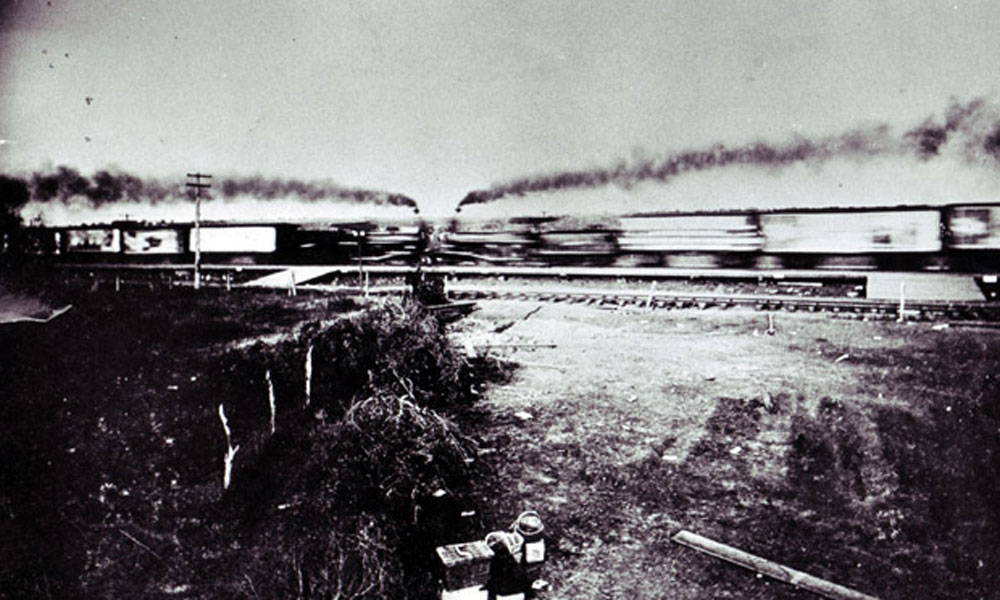
On the afternoon of September 15th, 1896 a publicity stunt involving two steam locomotives going at full throttle raced towards each other at sixty miles per hour collided in what became known as the Crash at Crush.
The crash was organized by George Crush an employee of the Missouri, Kansas and Texas, better-known as the Katy Railroad. During an economic downturn Crush convinced his bosses a staged train wreck would draw thousands of spectators would generate much publicity for the railroad. Much like car wrecks today people would flock to the scene of a train wreck so why not stage one.
They found the perfect spot between two hills a few miles north of Waco, Texas and christened the temporary town, “Crush.” The town’s namesake was right, newspapers all over the country heralded the event and thirty-three excursion trains transported some 40,000 people to watch the Crash at Crush.
Two locomotives, one painted green, the other red, met face to face. Each was pulling six boxcars. After touching cowcatchers the engines backed a mile and awaited the signal. The crews were instructed to open the throttles full, tie down the steam whistle and at sixteen exhausts, jump.
Anxious to get a better view many of the spectators moved beyond the safety zone.
An old engineer had warned such an impact could cause the boilers to explode but no one heeded his warning.
Excitement peaked at four o’clock when George Crush, riding a white horse threw his hat in the air as a signal and the trains slowly worked up a head of steam and began racing down the track.
The trains collided with a thunderous roar. It was said the two locomotives reared up against each other like two fighting stallions before falling on their sides. A moment later both boilers exploded sending flying wreckage in every direction. A steel bolt hit photographer Jervis Deane taking out his right eye. Many were burned by scalding water or flying shrapnel. Some of the wounded were a half-mile away from the wreck.
The railroad bosses fired George Crush but after the story made headlines around the world business boomed for the Katy and he was re-hired.
The publicity stunt did its work but that was the last time a railroad staged a crash.






